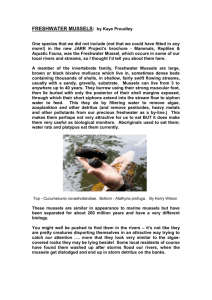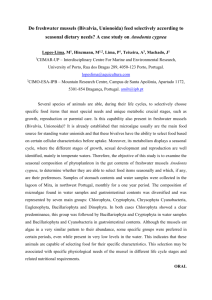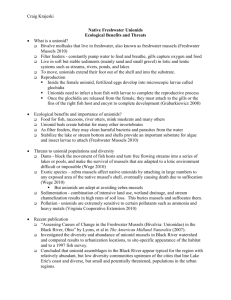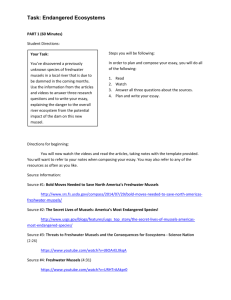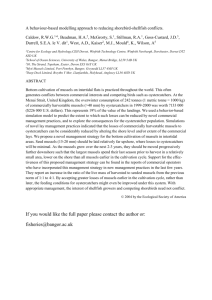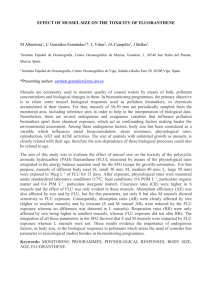ANATOMY AND LIFE HISTORY
advertisement
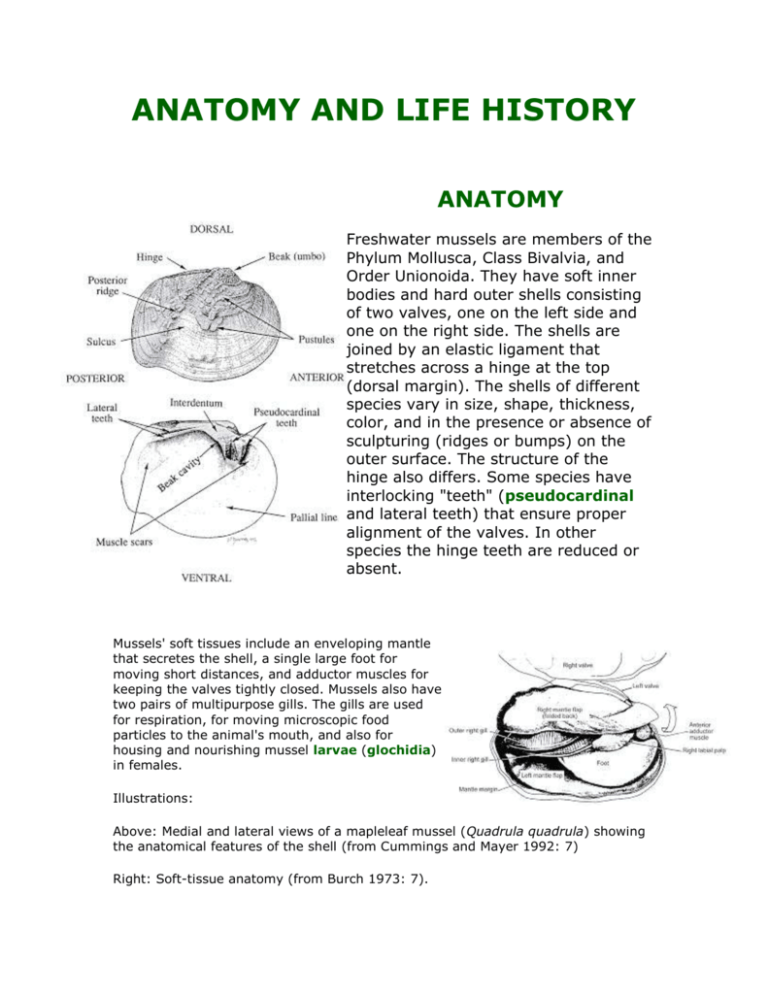
ANATOMY AND LIFE HISTORY ANATOMY Freshwater mussels are members of the Phylum Mollusca, Class Bivalvia, and Order Unionoida. They have soft inner bodies and hard outer shells consisting of two valves, one on the left side and one on the right side. The shells are joined by an elastic ligament that stretches across a hinge at the top (dorsal margin). The shells of different species vary in size, shape, thickness, color, and in the presence or absence of sculpturing (ridges or bumps) on the outer surface. The structure of the hinge also differs. Some species have interlocking "teeth" (pseudocardinal and lateral teeth) that ensure proper alignment of the valves. In other species the hinge teeth are reduced or absent. Mussels' soft tissues include an enveloping mantle that secretes the shell, a single large foot for moving short distances, and adductor muscles for keeping the valves tightly closed. Mussels also have two pairs of multipurpose gills. The gills are used for respiration, for moving microscopic food particles to the animal's mouth, and also for housing and nourishing mussel larvae (glochidia) in females. Illustrations: Above: Medial and lateral views of a mapleleaf mussel (Quadrula quadrula) showing the anatomical features of the shell (from Cummings and Mayer 1992: 7) Right: Soft-tissue anatomy (from Burch 1973: 7). LIFE HISTORY Freshwater mussels have an elaborate reproductive system. This system not only provides a way for mussels to generate offspring; it also helps each species increase its range. Mussels generally have separate sexes (male and female). However, some mussels are hermaphrodites, in which each individual has both male and female reproductive organs in its body. During spawning, males release sperm into the water. The sperm are drawn inside the female's shell, where they fertilize eggs in her body. The fertilized eggs develop into larvae (glochidia) and are stored for a time in the female's gills. When the glochidia mature, the female generally expels them into the water where they must attach themselves as parasites to the gills or fins of fish. In some species, part of the female's mantle resembles a swimming minnow that lures potential host fish and increases the chance that her larvae will attach to a suitable fish and survive. Larvae remain on the host fish for a period of weeks or months. During this time the larvae metamorphose and develop adult organs and structures. Young mussels then detach from their host and drop to the bottom of the body of water. Thanks to the swimming fish, they may now be far away from their parents. Mature mussels spend most of their lives, which range from 10 to 100 years, partially or wholly buried in the bottoms of streams and lakes. Mussels often have specialized habitat preferences. Many species cannot live in muddy streams with excess amounts of silt. Illustration: Above: Generalized life cycle of freshwater mussels (from Cummings and Mayer 1992: 2.)

